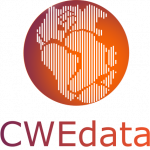Methodology
What is it?
DATA-MUNDO is a web application aimed at integrating different sources of structured data in relational language, oriented by territorial and temporal criteria, to generate world-historical information about the world economy and the international system.
DATA-MUNDO intends to collaborate with existing initiatives in the scope of world-systems analysis, contributing to the production of new statistics. Its objective is to offer an alternative to methodological nationalism (cf. Vieira, 2015) and enable rethinking the process of development and the mechanisms of reproduction of inequalities (cf. Arrighi and Drangel, 1986; Hopkins and Wallerstein, 1982; Korzeniewicz and Moran, 2009).
Statistics in world-historical perspective
The main distinction of world-systems analysis in relation to other perspectives is the insistence that the unit of analysis must be the world-system, defined in terms of processes and economic connections, and not units defined based on legal, political, cultural, geological, or any other criteria.
The world-system in which we live, the capitalist world-economy, is simultaneously defined by spatial and temporal phenomena. Spatially, it is composed of different economic zones whose location tends to shift over time, redefining its geography. Temporally, it is subject to cycles of 50 to 60 years, known as Kondratiev waves, which transform into secular structural patterns.
Nevertheless, it is known that there are no global data, since economic, political, and social statistics are mostly national, subnational, household, or individual. Although of undeniable value, these statistics present certain limitations, as they ignore: a) the spatiality of economic activities over time; b) the lack of correspondence between state borders and economic activities; c) the relational character of economic activities. In addition, it is known that there are no systematic comparisons of the changes that cycles cause in central, peripheral, and semiperipheral zones, nor systematic comparisons over time, especially in the long duration.
In this sense, the effort to open the social sciences (cf. Sciences, 1996) must also be an endeavor aimed at guiding empirical research in the elaboration of data at the world-economy level and in world comparisons, both in space and over long periods. For this, there are two major obstacles: data availability and theory availability. These are the challenges that drive the advancement of knowledge. Efforts in this direction have used various techniques, such as bivariate descriptive analysis (Arrighi & Drangel, 1986; Taylor, 1987, 1988; Korzeniewicz & Awbrey, 1992; Karatasli, 2017), cluster analysis (Lima, 2007; Souza & Ouriques, 2019), network analysis (Snyder & Kick, 1979; Kick et al., 2000; Kick & Davis, 2001; Kick et al., 2011; Nemeth & Smith, 1985; Smith & Nemeth, 1988; Peacock, 1988; Rossem, 1996; Smith & White, 1992; Arend, 2017) and even discriminant analysis (Dezzani, 2001, 2002). We believe that these initiatives need to be taken seriously. The web application DATA-MUNDO joins these efforts and, through the production of alternative empirical analyses of a world-historical character, aims to be a collaborative space and debate, aiming to overcome the obstacles mentioned above.
DATA-MUNDO starts from national statistics, which are subjected to methodological operations to reveal systemic properties of the capitalist world-economy. For this, the application relies on quantifiers, not quantitativeness. Quantification and other statistical analysis techniques are used to measure relationships or discover new relationships through measures or mathematical equations, which are not an end in themselves, but means for qualitative research. Not all variables relevant to the social sciences are measurable. When they are, they often present different degrees of difficulty for their estimation. Variables can be continuous or discrete, nominal, ordinal, interval, or proportional, and each requires a specific type of approach. “Quantification does not change, absolutely, the qualitative conditions of things; it simply submits them to another type of operations.”, reminds the historian Julio Aróstegui (2006).
To describe the development processes of the capitalist world-economy, World-Systems Analysis maintains that it is necessary to regroup existing data in order to identify differences in patterns according to: a) central, peripheral, and semiperipheral zones; b) long-term cyclical movements; and c) the secular phase in which the capitalist world-economy is located.
Catalogs
For the realization of the DATA-MUNDO project, different data sources were integrated, gathering in a single database information on a world scale about territory, population, land use, labor, income, human development indices, and economic complexity indices.
To know in detail the origins and contents of the data incorporated into the platform, access the source catalog and the metadata.
Data Structuring
The different sources were integrated into a database where the fact tables are related simultaneously to space and time so that related queries are possible, allowing multidimensional modeling of the economy and the international system.
Programming Languages
The web application CWEdata was programmed in DAX and R languages, which allow the elaboration of functional and interactive dashboards, with which even users not familiar with advanced statistical techniques can explore data and interpret them from predefined analyses.






